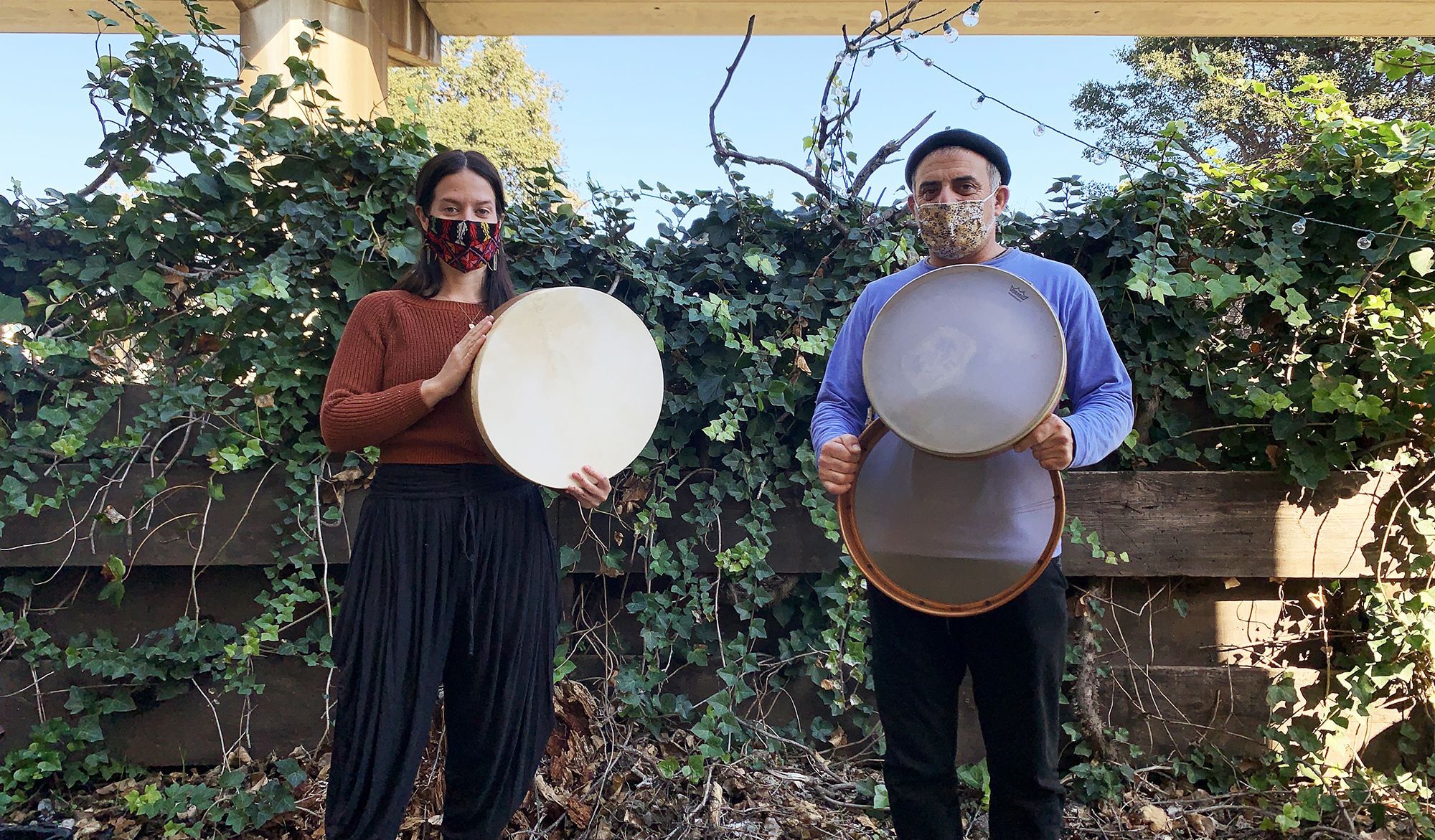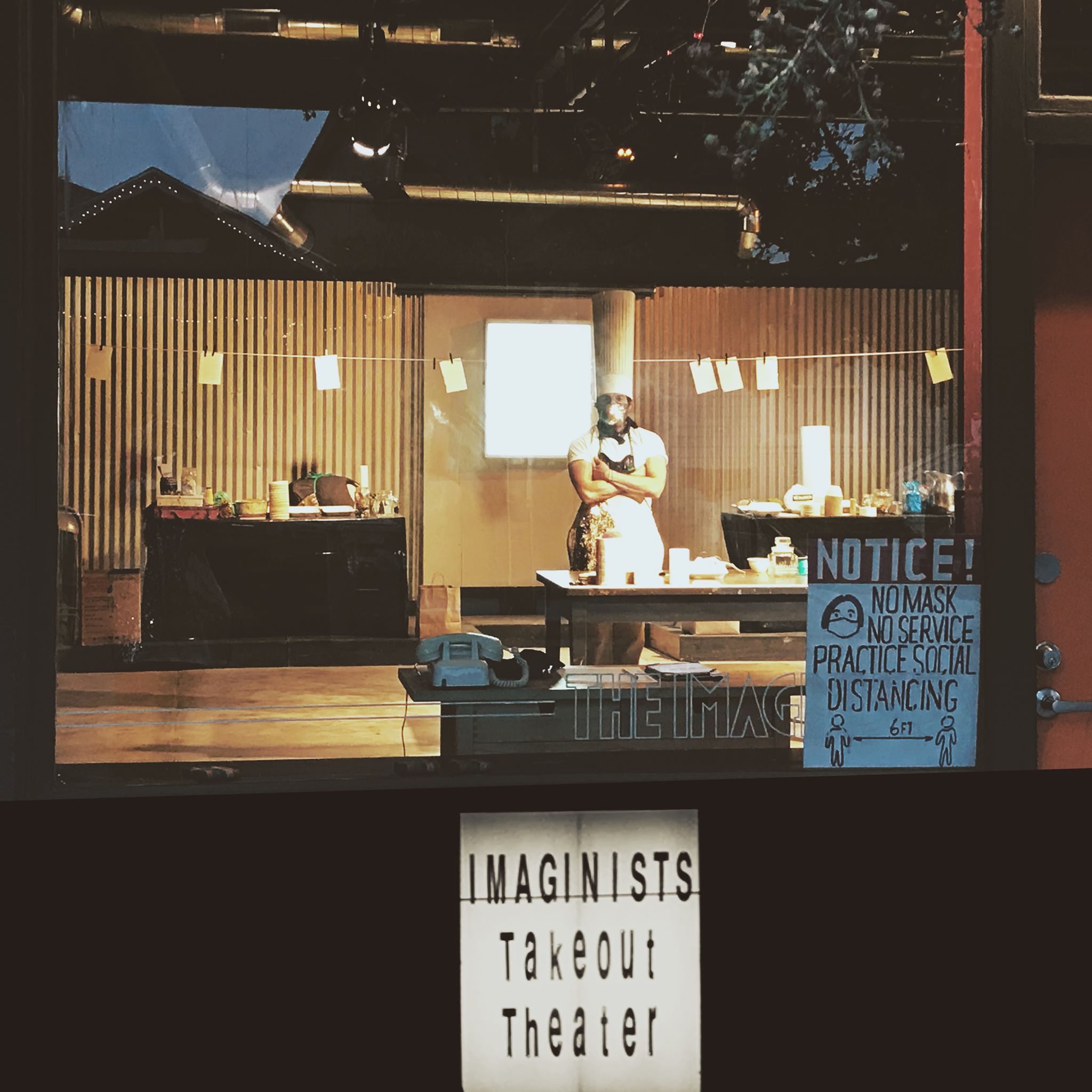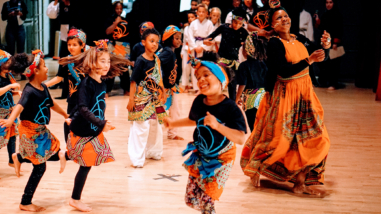Performing arts at the precipice

An opportunity for transformation
In the San Francisco Bay Area, the ongoing impact of the pandemic has put more than half of the sector out of work, with individual artists—particularly BIPOC artists, who tend to work more independently and with smaller organizations—most affected. Arts advocates have argued for years that the lack of both equitable working conditions and safety nets was detrimental to the sector and the region as a whole; now those deficiencies are potentially devastating. Equally concerning is how the high cost of living in the Bay Area, together with the cultural sector’s historic trends of undercapitalization, are undermining its capacity to respond to current conditions.
We’ve seen a wide range of responses and survival tactics among arts and culture organizations over the past year. Some organizations are retrenching, some are trying to retool and find new sources of revenue, and some are hibernating. While a select few groups were well-positioned to continue their work during the pandemic, the overwhelming majority have laid off staff and are aggressively shedding or renegotiating long-term liabilities like lease agreements and contracts related to special projects and commissions. The usual business of collaborating with communities and artists, planning new work, and engaging with youth and educators has either slowed, or been paused entirely.
In this environment, it’s tempting to focus on macro-level measures like the sector’s total earned revenue, or the aggregate number of artists employed. But it’s critical to acknowledge that while some organizations are laying off half their staff, many others only had one or two staff to begin with. Likewise, while some directors have made the difficult decision to cut salaries for all, most arts workers labored for low wages or on a volunteer basis even before the pandemic. With this reality in mind, we need to look more closely at who can afford which organizational strategies. Who can access and use relief funds for PPE and to install glass partitions, and who is fundraising to support basic needs like food and rent money for their students and families? Who was able to solicit emergency donations to retain staff, and who continues to wait for a second round of federal relief in order to pay their own salary?
Some of these analyses are possible, and others are not. But we know enough to see that the same barriers that created inequities in the sector have also been exacerbated by the pandemic and its effects. The resulting distress and destruction within the field is ugly, heartbreaking, and deeply at odds with our values. The direct and intimate connections fostered by the performing arts and local communities are in short supply these days. Yet the crisis is also breeding transformation on a daily basis, some of which is inspiring and embodies the kind of change the sector has needed for a long time.
In this environment, who will have the capacity to exert their power, to shape the cultural transformation we might hope for? How can we throw our support behind a healing recovery, and rejuvenation for the sector that is more equitable, and more just? How can we ensure our work is built from and nourished by cultural and community self-determination?
Our role
Let’s not kid ourselves: the world isn’t waiting to see what grantmakers think. People are hungry, behind on rent, out of work. They need money and we have money. And yet, even if we were to give away as much as possible right now, not only would it be insufficient to provide truly widespread relief, it would do little to resolve the sector’s longstanding problems. The Hewlett Foundation’s dedication to tackling social problems that require long-term strategies means that a critical part of this job is being clear about not only our goals but also our role. For an arts sector in crisis, this begins by acknowledging that no matter what the foundation does, people are resilient, artists are industrious and resourceful, and creative power will always have a place in society. We choose to be selective and pragmatic in our work for two related reasons: our spending power is limited, by time and size; and we respect and admire the cultural ecosystem we support for its independence, complexity, and potency.
To know, value, and acknowledge the power of the arts allows us to focus not on whether or not there will be a recovery, but what shape that recovery will take. There is no precedent or model that can tell us how our local sector will be different in three or five years. But one lesson that we learned again in 2020 is that by the time an emerging challenge becomes endemic, the damage it has caused will be deep, and overcoming it will be difficult and costly. The Performing Arts Program’s adaptation grants are targeted toward addressing this challenge, and each assumption we have made so far has led to a specific piece of the overall approach.
First, we believe we know enough to make a strategic investment. Crisis support, advocacy, and expressions of solidarity all have their purpose and place, in both the short term and long term. But these particular grants were driven by the need for strategic action. As a leading supporter of the arts in the Bay Area, we knew we needed to aim for as much impact as possible, whether to defend what we might lose, enable what we know is needed, or invest in what we can’t yet see. While the Performing Arts Program continues to develop its tactics to support the field through the crisis, this set of adaptation grants represents a deliberate action that, hopefully, will have a significant and lasting impact for the recipients, whatever shape the recovery takes.
Next, when we think about the cultural future of the Bay Area, we know that even for a relatively large arts program like ours, there’s a lot that is beyond our control, and appropriately so. Funders with smaller geographic scopes, or who work in more homogenous communities, might feel equipped to be more directive or prescriptive in their region. But even if we had the resources to single-handedly alter the Bay Area’s cultural future, it would be a gross violation of our values and guiding principles to try to do so. Instead, we must be guided by the values of equity and justice in how we balance the need to support as many people as we can with the need to provide that support at a scale and through partners for whom it can be truly meaningful. For the adaptation grants, this meant narrowing our focus to those groups who were right-sized to the effort. So while each organization’s “fit” with our strategies mattered in selecting recipients, so, too, did budget size, community standing, leadership capacity, and access to other sources of support.
Finally, to maximize impact, we know we need to align our behaviors to our strategies. As a long-term partner in social change, the Hewlett Foundation is accustomed to providing multi-year general operating support to organizations that are well-aligned with its strategies and goals. But these adaptation grants were not designed to be crisis relief grants for preferred organizations to cover rent burdens or meet base payroll. These grants are more like vaccinations, targeted at 34 specific organizations that the region can ill afford to lose, and for whom the infusion of cash can help ensure long-term health. As such, we have structured all of the awards as multi-year project grants, in which Performing Arts program officers will play a more active role than we usually would, as thought partners and sounding boards. In addition, the Performing Arts Program is facilitating knowledge sharing and providing supplementary resources, including access to external financial consulting and analyses.
Expectations
So where is this all leading? Our hope is that each organization will both reaffirm its bedrock principles and demonstrate how its mission is best realized in the coming decade. That said, adaptation will mean something different for each organization. We do not want change for change’s sake, nor we do we want to ignore the differences between adaptation, growth, and change. If anything, 2020 showed us that creation and destruction can often be part of the same process. We hope that these grants allow each organization ample time and space to undertake that process. We think this active re-imagining is critical for the long-term health of each organization. With sufficient resources, arts leaders and their communities can identify or reaffirm what is needed and valuable, and design how those mutually held visions can best be realized as our environment continues to produce stressors, pressures, and change.
Because each organization is developing its own adaptation plan, the Performing Arts Program has decided to delay announcing who the adaptation grant recipients are until later this year. This delay allows each organization to design its own path, and communicate with its own people, to reach a plan on its own terms. This summer, once those plans are in place, we will partner with the grantees to share more detail about the experiments, improvements, and transformations they are envisioning.
Arts organizations are under immense pressure right now, and are also faced with financial incentives that favor specific programs, behaviors, and even audiences. As the sector continues to endure, and hopefully soon begins to rebuild, we recognize that divides and inequities in cultural access are just one of the field’s ongoing challenges. For our work, and for these adaptation grants, we are most concerned that the same forces that have stratified and ossified the arts sector might also now rapidly crush the creativity of communities, and corner organizational leaders into strategic paralysis, panic, or a dispiriting combination of the two.
The pressures that artists and cultural organizations face at the beginning of 2021 are many and multifaceted. Our Performing Arts Program can’t solve social and economic disparities, but we must contend with them. More urgently, those disparities, and the ways they are deeply racialized in the Bay Area, frame our work, and show how the way we shape specific efforts like these adaptation grants is critical to a more equitable future for the performing arts.




